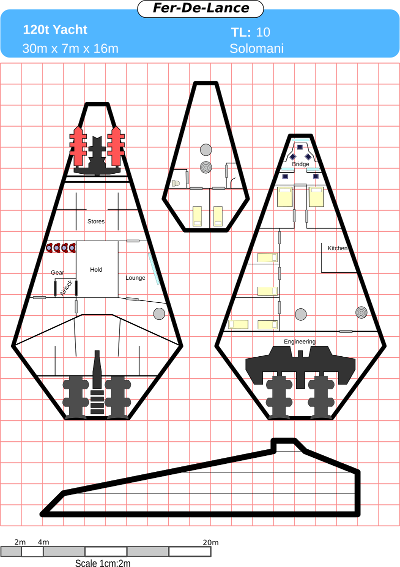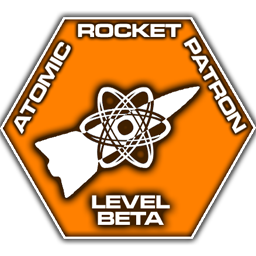Starship Models
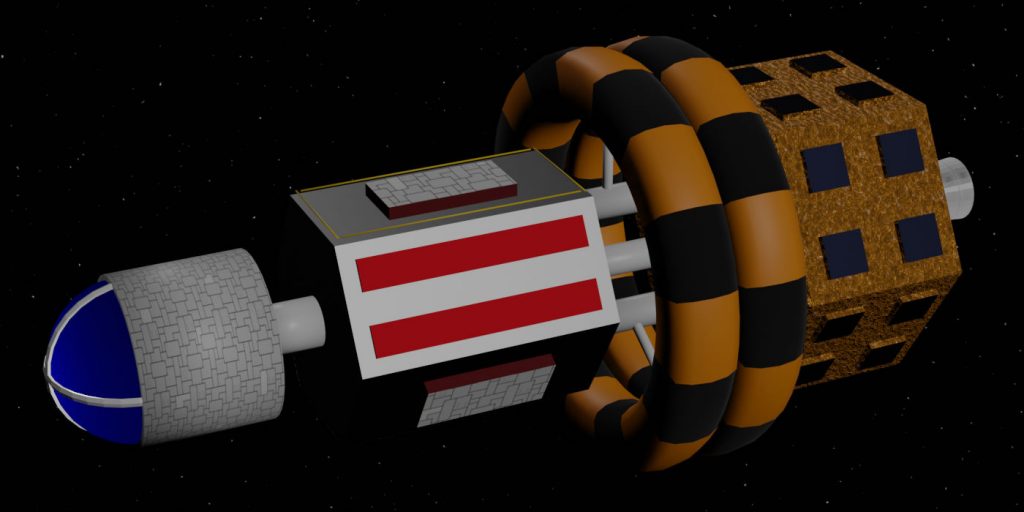
Back in the 1980s, I wrote a tabletop RPG I called The Dark Wheel which was inspired by a certain computer game of the period (and named after the novella which came with the game) which involved flying around in a spaceship, shooting pirates and trading goods. I drew up designs for dozens of new ships, mostly named after snakes, and done in the vector style of that game.
They all got thrown out at some point (and the game itself was never used beyond my circle of friends at the time). Since then, I’ve taken multiple stabs at designing starships for Science Fiction RPGs which have a similar style to Elite, and it was helped by the fact that it was itself inspired by Traveller.
The problem I’ve always had is how to represent what the ships look like. I while back I tried drawing up SVG plans using Inkscape, but this isn’t really designed for 3D models, and displaying what the outside of the ship looks like was tricky.
Any change to any part of it requires updating both side and top views, though you do get floor plans out of it.
I’ve also tried building Lego models, but they’re hard to digitise, and the amount of Lego I have is finite, so if I want to keep the model around, or make variations of it, it starts getting expensive.
Building Lego ships to scale is also tricky, since a scale that works well for a 20dt fighter, doesn’t work well for a 1,000dt cruiser. The advantage of Lego though is that it did give me a solid physical model I could hand to players during an RPG session so they could actually see it for ‘real’. Some of my simpler designs are available in my Starship Recognition Guide, but I’ve done more complex designs as well, such as the Song Cai Flower.
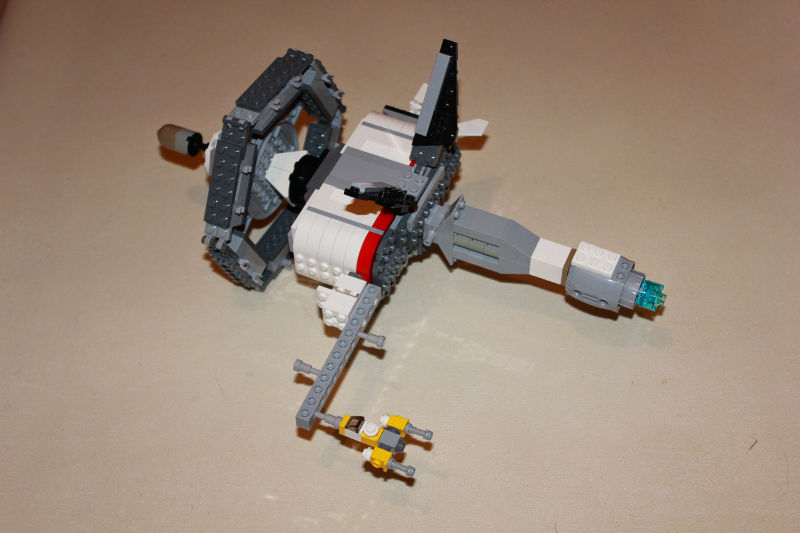
My latest attempts have moved to Blender, which allows me to attempt to model things in 3D digitally. This should allow me to model anything from a fighter up to a dreadnaught or super carrier, they’re easy to copy and make variants of, and trivial to stick up on a website or print out images of.
However, Blender is anything but simple to use, so it’s been a steep learning curve. Another complication is that I want to begin my designs set in the plausible near future, so designs are heavily limited by fuel/mass ratios and the excessively long flight times.
The target setting is for my YAGS SciFi rules, which are designed for a laser guns and spaceships setting similar to Traveller or Babylon 5, where interstellar space travel becomes relatively common and practical, but advancements in computer technology are limited.
My planned progression of Technology Levels (TL) are initially:
TL 9 – Mid to late 21st century, with no magical (i.e. sufficiently advanced) technology. I’m using this period as a buffer between the modern day and actual magical technology, so definitely no jump drives or anti-gravity, and drives are limited to chemical and basic nuclear drives of the sort that fall under hard science fiction.
TL 10 – The beginnings of Jump drive technology, but still no gravity technology. Reaction drives are moving to advanced nuclear and plasma technology which is considerably better than anything being played with in the modern day.
TL 11 – Reaction drives are making it easy to get around a solar system within reasonable time frames, but still not gravity technology.
TL 12+ – This will start to see the use of basic repulsor technology, which allows much easy SSTO from worlds, but reaction drives are still needed to get between worlds.
Though I’m more concerned with settings games where TL 15+ technology is available, I want to figure out what will be possible at that level by starting from the modern day and working up, to ensure that there’s a proper progression.
Since this is SciFi, and not hard science fiction, I’m not too concerned on getting everything correct, but I want things plausible enough. Previously when I’ve just gone with what seemed right, rather than working through the numbers, six months later I find something is terribly broken and have a strong desire to redesign everything.
Which means I need to flesh out my ship design rules so I can properly work out statistics such as acceleration and delta-v. Which means finding real world numbers for rocket engine performance, fuel densities and the like. Nyrath’s Atomic Rockets site has been invaluable for this.
Design rules won’t be terribly realistic, but aim to be more realistic than for example the Traveller rules. The type of fuel will have considerable effect on its mass and volume, and ship performance will change as fuel is consumed.
For my Albatross design I’m finding this has led to several re-designs, and I’m realising that the crew quarters probably need to be much larger if journey times are going to be in months. Everything design decision affects everything else.
I still have plans for many ships named after snakes, including the classics such as huge Anaconda class freighters and fast Viper patrol craft, but these will be based loosely on the 80s versions of these ships rather than anything done recently. I want to save these names for when ships are really capable though, possibly around TL 13-15.
The naming scheme I currently use for my low tech designs is based on birds, one I’ve used for a long time (and which comes from another space computer game from the ’90s, the name of which I can’t remember) for ships built by Black Sky Industries, a major player in the military-industrial complex of several of my near future histories.
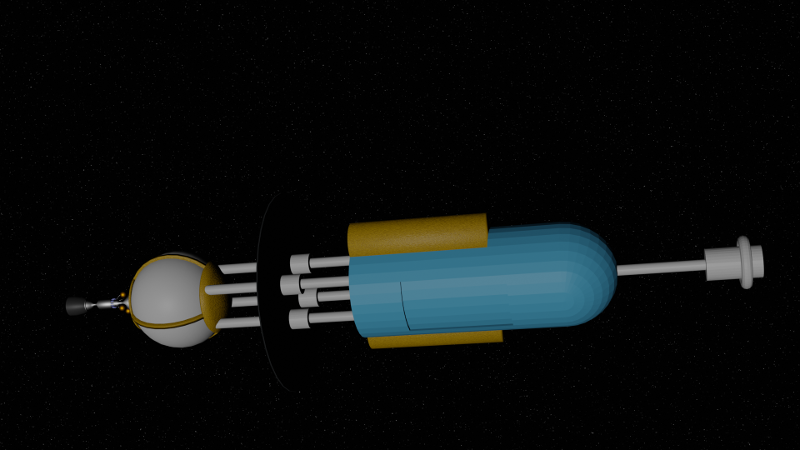
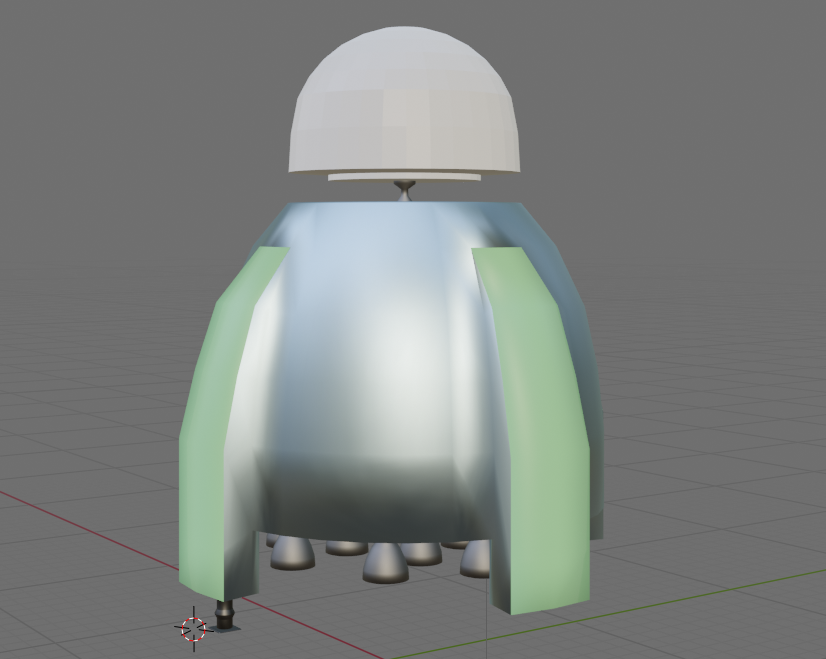
Also up for design at the moment are the Condor SSTO flying wing, and Emu orbital tug. Designs and models are available on GitLab under an MIT license. My current headache is coming up with some crude designs for rocket engine types, and working out the sizes for vacuum/non-vacuum engine nozzles (YouTube has been another invaluable resource for explaining how some things work, including Scott Manley and Everyday Astronaut) so they’re not completely wrong.
